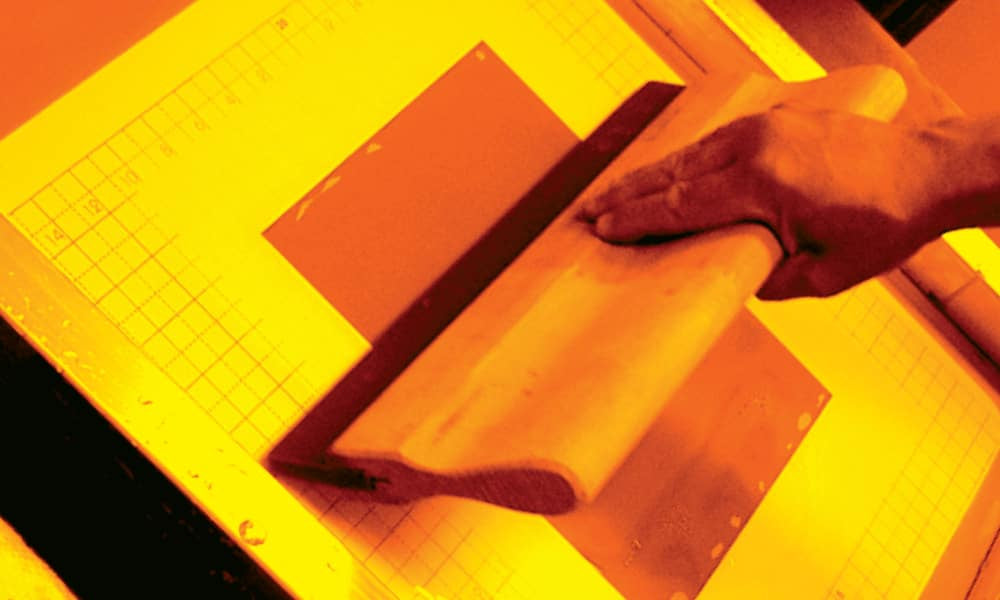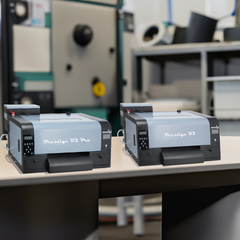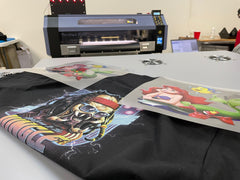| Problem | Possible Cause | Solution |
| Stencil peels or washes away during washout | Underexposure | Perform a Step Wedge Test |
| Poor fabric preparation | Degrease steel & metalized polyester, abrade & degrease synthetics | |
| Residual moisture in stencil during exposure | Under humid conditions, stencil may require additional drying after backing sheet removal | |
| Washout temperature is excessive | Stay below 40oC (104oF) | |
| Silk or cotton organdy | Use only synthetics, stainless steel, or metalized polyester | |
| Air Pockets | Fabric not wet enough | Mesh openings must be filled with water; rinse just before adhering; check fabric preparation; use vertical, newsprint technique for thin CDF and fine mesh |
| Poor fabric preparation | Degrease steel & metalized polyester; roughen & degrease synthetics | |
| Poor fabric stretching | Upgrade stretching method | |
| Adhering surface not flat | Use completely flat surface | |
| Irregular or missing squeegee stroke | Use sharp-edged, medium hardness squeegee with slow steady stroke, without excessive pressure | |
| Stencil breakdown | Underexposure | Perform Step Wedge Test |
| Poor fabric preparation | Degrease steel & metalized polyester; roughen & degrease synthetics | |
| Solvents too agressive | Coat squeegee side with 569FAST; use CDF/LX or CDF/QSR film | |
| Needs mechanical reinforcing layer | Coat squeegee side with FX88 (RLX for CDF/LX, QFX for CDF/QSR or QTX for CDF/QT) | |
| Aqueous or water-containing ink | Use CDF/LX series or CDF/QT | |
| Poor definition (edge sharpness) | Waiting too long before squeegee stroke | Have squeegee ready after film contacts wet mesh |
| Mesh too coarse for film | Use thicker film; stencil thickness must be related to mesh count | |
| Underexposure | Perform Step Wedge Test | |
| Incomplete washout | Wash out thoroughly from both sides | |
| Poor Resolution (fine details) | Positives lack density | Remake positives |
| Pre-exposure | Work under safelights; store coated screens in dark | |
| Poor exposure contact | Check vaccuum | |
| Poor light source | Upgrade light source; increase exposure distance if possible | |
| Mesh too coarse | Use finer mesh | |
| Film too thick | Use thinner film | |
| Overexposure | Perform Step Wedge Test | |
| Pinholes | Dirt and dust | Clean positives and contact glass; remove backing just before exposure; dust film emulsion before adhering |
| Underexposure | Perform Step Wedge Test | |
| Solvents too aggressive | Coat on squeegee side with 569FAST; use CDF/LX or CDF/QSR series film | |
| Poor fabric preparation | Check preparation' adhere as soon as possible after the degreasing rinse | |
| Difficulty reclaiming | Underexposure | Increase exposure to fully cure emulsion |
| Wrong stencil remover | Use only Ulano No. 4, diluted No. 44, No. 42 or No. 5 | |
| Solvents too aggressive | Coat on squeegee side with 569FAST; use CDF/LX or CDF/QSR series film | |
| Thicker stencil needed | Mesh too coarse | Use finer mesh, if possible; use thicker CDF Direct-Film; use Direct-Indirect Method, or Lamination Technique |




